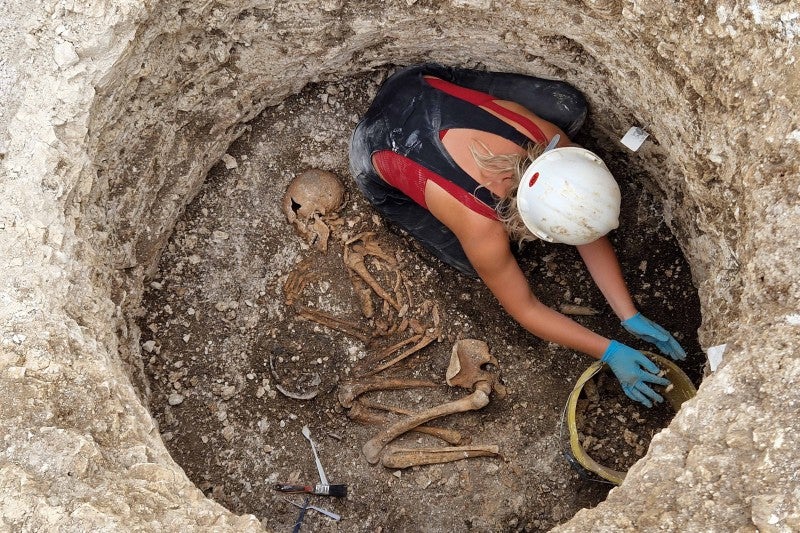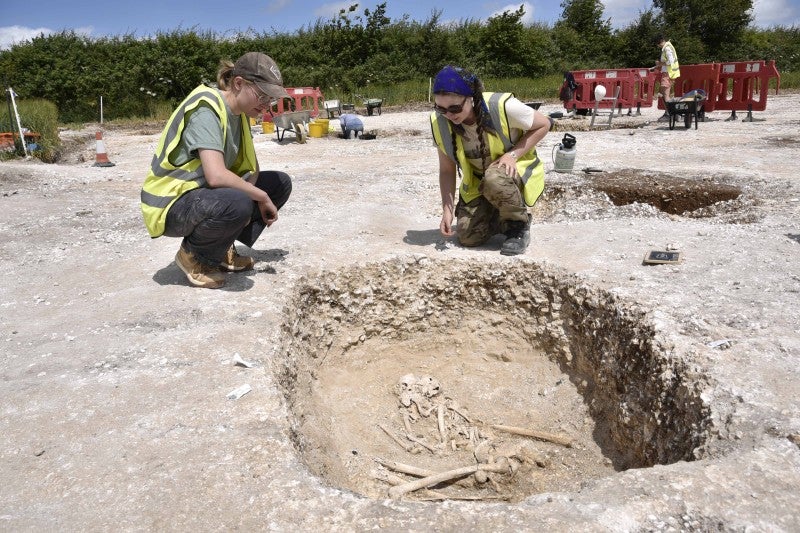Women led early British society 2,000 years ago, archaeologists find
Findings suggest in some parts of early British society husbands moved to join their wives
Your support helps us to tell the story
From reproductive rights to climate change to Big Tech, The Independent is on the ground when the story is developing. Whether it's investigating the financials of Elon Musk's pro-Trump PAC or producing our latest documentary, 'The A Word', which shines a light on the American women fighting for reproductive rights, we know how important it is to parse out the facts from the messaging.
At such a critical moment in US history, we need reporters on the ground. Your donation allows us to keep sending journalists to speak to both sides of the story.
The Independent is trusted by Americans across the entire political spectrum. And unlike many other quality news outlets, we choose not to lock Americans out of our reporting and analysis with paywalls. We believe quality journalism should be available to everyone, paid for by those who can afford it.
Your support makes all the difference.Women were at the centre of early Iron Age British communities, a new analysis of 2,000-year-old DNA reveals.
The research, published in the journal Nature on Wednesday, found that British Celtic societies were matrilocal with married women staying in their ancestral communities.
Human societies have often been shaped by where married couples choose to reside culturally.
For instance, in patrilocal communities partners mainly reside with or near the families of the male, whereas in matrilocal societies, couples live near the female’s parents.

Previous studies confirm that patrilocality was widely followed in the European Neolithic, Copper and Bronze ages.
However, earlier research hinted that in the case of Celtic societies, women had higher status.
Romans documented their astonishment at finding women occupying positions of power, writing about queens – Boudica and Cartimandua – who commanded armies and finding the empowerment of Celtic women remarkable.
Researchers have also found evidence of the Durotriges tribe, who occupied the central southern English coast around 100BC to AD100, burying women with valuable items.
Now, DNA from these Celtic communities analysed by researchers at Trinity College Dublin supports this theory.
“Such a matrilocal pattern is undescribed in European prehistory,” scientists wrote.

Scientists analysed the genomes of 57 individuals buried in Iron Age cemeteries associated with Durotrigian communities in southern Britain.
They found that most individuals were related through the maternal line.
Unrelated individuals found in the cemetery were also found to be predominantly male, indicating they migrated to the area after marriage.
“This tells us that husbands moved to join their wives’ communities upon marriage, with land potentially passed down through the female line,” study co-author Lara Cassidy said.
“This is the first time this type of system has been documented in European prehistory and it predicts female social and political empowerment,” Dr Cassidy said.
Researchers then compared the ancient DNA from Britain with other European sites such as France, the Netherlands, and Czechia, spanning over 6,000 years.
They could gain insights into population movements and find connections between British Iron Age populations and populations from continental Europe.
Scientists found evidence of persistent cross-channel cultural exchange that likely influenced local cultures and possibly introduced Celtic languages.
While matrilocality does not necessarily mean female political and social empowerment, researchers say it is “strongly associated” with these, adding that it also “resonates with Roman descriptions of Celtic women”.
The findings provide a much deeper understanding of ancient British societies and their connections with continental Europe.
Join our commenting forum
Join thought-provoking conversations, follow other Independent readers and see their replies
Comments